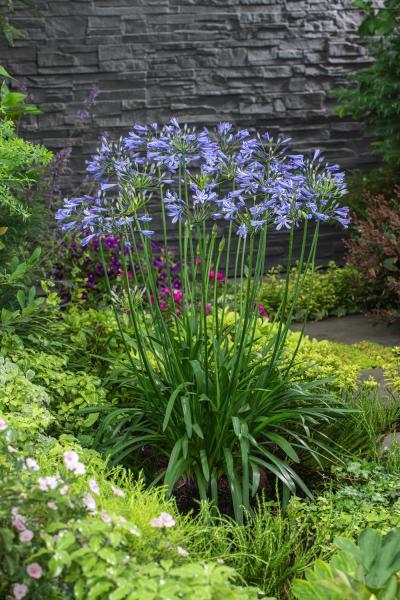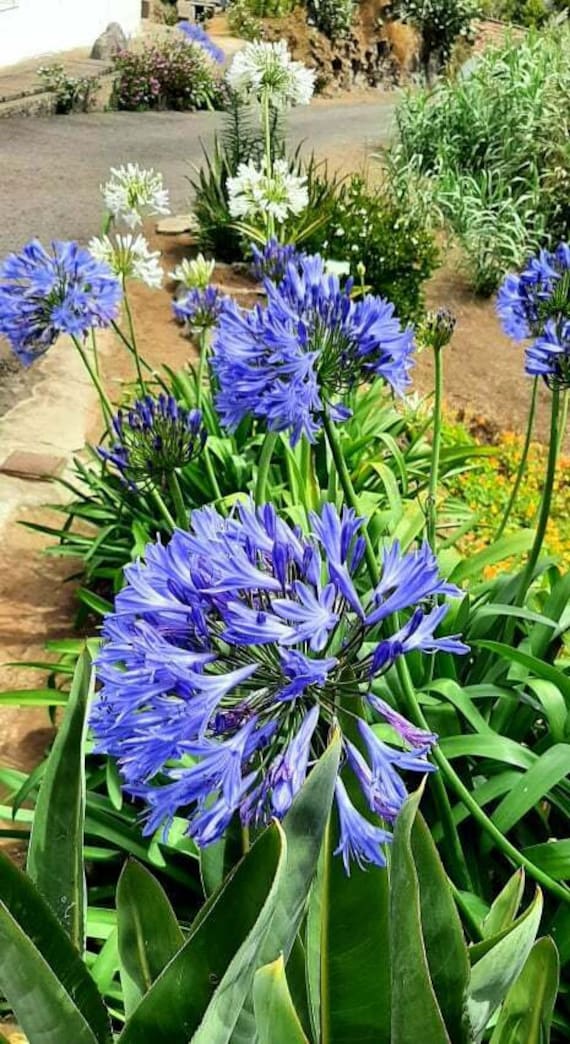Seasonal Agapanthus Treatment: Getting Ready For Winter Season and Summer season
Seasonal Agapanthus Treatment: Getting Ready For Winter Season and Summer season
Blog Article
Releasing the Secret to Successful Agapanthus Farming: Tips and Techniques for a Flourishing Yard
In the realm of gardening, cultivating agapanthus effectively calls for a strategic method that includes various elements of plant treatment. By comprehending the nuances of agapanthus farming, one can develop an atmosphere where these plants grow and bloom abundantly.
Growing Agapanthus: Best Practices
When growing Agapanthus, appropriate dirt preparation is crucial for guaranteeing effective growth and development of these lovely flowers. Agapanthus, typically known as Lily of the Nile or African lily, flourishes in well-draining dirt with a slightly acidic to neutral pH degree - Agapanthus. Prior to planting, it is crucial to modify heavy clay soils with organic issue such as compost or peat moss to enhance drain and offer important nutrients for the plants
To grow Agapanthus, choose a location that obtains full sunshine to partial shade, as this will certainly advertise healthy and balanced development and plentiful flowering. Dig a hole two times the diameter of the plant's origin round and put the Agapanthus at the exact same deepness it was formerly expanding. Carefully backfill the hole with soil, weighing down securely to get rid of any kind of air pockets around the roots.
Water the freshly planted Agapanthus thoroughly and remain to maintain the soil equally wet, especially during the plant's active growing season. Agapanthus. Applying a well balanced plant food once a month can even more support the plant's development and flowering. By adhering to these best methods for planting Agapanthus, you can develop a sensational display screen of these captivating flowers in your yard
Suitable Dirt Conditions for Agapanthus
For ideal development and growing success of Agapanthus plants, making sure the dirt problems are perfect is important. Agapanthus likes soil that is rich in nutrients, so integrating a well balanced plant food during the expanding period can advertise healthy and balanced growth and vivid blossoms.

Watering and Fertilizing Tips
To make certain healthy growth and vibrant blossoms, appropriate watering and feeding techniques are vital for effective Agapanthus growing. Agapanthus plants benefit from routine watering, specifically during the expanding season. It is suggested to water deeply when a week, making certain the soil is wet but not saturated. During hot weather or in pots, even more regular watering may be required to protect against the dirt from drying entirely.
When it concerns fertilizing you can check here Agapanthus, a balanced fertilizer with equivalent parts nitrogen, phosphorus, and potassium can be used in the springtime to advertise healthy development and blooming. Slow-release plant foods are perfect for providing nutrients progressively over a prolonged period. Avoid over-fertilizing, as this can bring about too much foliage growth at the expenditure of blooms.
In addition, incorporating raw material like compost right into the soil can enhance nutrient degrees and boost soil structure, assisting in the total health and wellness of the Agapanthus plants. By adhering to these watering and feeding suggestions, garden enthusiasts can guarantee their Agapanthus plants prosper and generate sensational displays of blossoms.
Pruning and Deadheading Methods
Correct trimming and deadheading techniques play an essential role in keeping the health and wellness and visual appeals of Agapanthus plants, complementing the essential practices of watering and feeding for effective cultivation. Trimming Agapanthus includes eliminating spent flower heads, dead or yellowing leaves, and overall shaping of the plant to advertise better growth. Deadheading, the process of removing discolored flowers, not only enhances the plant's look but likewise motivates more blooming.
When deadheading Agapanthus, it is suggested to snip off the flower stem at the base utilizing sharp, tidy shears. This process redirects the plant's energy from seed production back right into root and vegetation development, promoting a healthier and more durable plant. Normal deadheading can extend the flowering duration of Agapanthus and prevent self-seeding, which can result in overcrowding.
In regards to trimming, Agapanthus usually advantages from a light trim after flowering to clean up the plant and urge fresh development. Cutting down the invested blossom stems and eliminating any dead or damaged foliage assists maintain the plant's vitality and overall appearance. Nonetheless, it is essential to avoid cutting into the crown of the plant, as this can weaken its health and wellness.

Protecting Agapanthus From Pests and Diseases
Executing reliable parasite and disease management techniques is crucial to safeguarding the health and official statement vitality of Agapanthus plants in growing. One typical pest that affects Agapanthus is the Agapanthus borer, a caterpillar that passages right into the plant, triggering damages to the leaves and flowers.
Along with parasites, Agapanthus are susceptible to illness such as origin rot and fungal fallen leave spots. These issues can frequently be stopped by ensuring proper drainage and preventing overwatering. If signs of disease show up, affected parts of the plant must be quickly gotten rid of to avoid further spread. Fungicides may additionally be used as a therapy step, adhering to the manufacturer's directions meticulously. By remaining alert and attending to bug and condition issues quickly, gardeners can aid their Agapanthus thrive and flourish.

Conclusion
In conclusion, effective growing of agapanthus calls for proper growing strategies, optimal dirt problems, sufficient watering and feeding, routine trimming and deadheading, and defense from diseases and parasites. By following these pointers and methods, garden enthusiasts can ensure a flourishing yard loaded with beautiful agapanthus blooms. Agapanthus. Remember to preserve regular treatment and attention to information to promote the health and wellness and durability of these spectacular plants
When growing Agapanthus, correct soil preparation is vital for ensuring effective growth and growth of these attractive blossoms.Water the recently grown Agapanthus thoroughly and read this proceed to keep the dirt evenly damp, specifically throughout the plant's energetic expanding period.For optimal development and blooming success of Agapanthus plants, ensuring the soil conditions are perfect is essential. When growing or transplanting Agapanthus, guarantee the dirt is well-prepared to supply the necessary structure for the plants to establish themselves successfully. One common bug that influences Agapanthus is the Agapanthus borer, a caterpillar that passages right into the plant, creating damages to the blossoms and fallen leaves.
Report this page